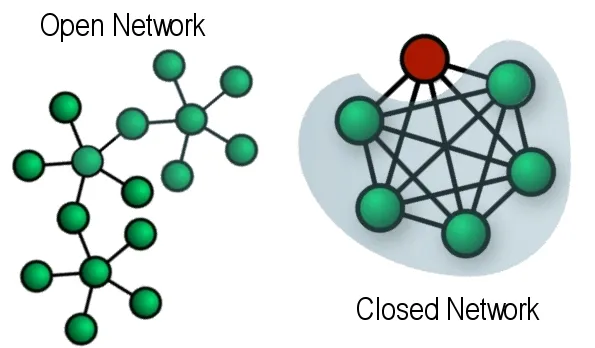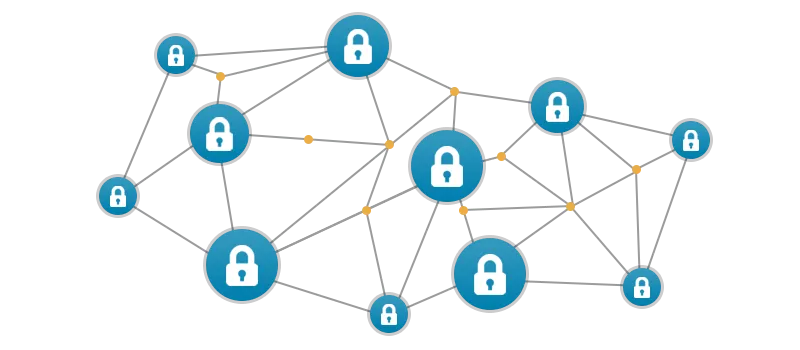R3 is a consortium of about 200 firms coming together to research and develop distributed database models, somewhere along the lines of Bitcoin. Usually, they receive a lot of heat as they say they are researching a corporate or private model of “Blockchain”, but are in-fact developing a version of Distributed Ledger Technology (DLT). The debate between a Public Blockchain and a Private Blockchain (yes, its an oxymoron) is the center of great distress.

Source: Fiber Optical Networking
Another such debate that hasn’t reached mainstream discussion yet, as it falls under the Public Blockchain category, is the difference between an Open-community Blockchain and a Closed-Environment Blockchain. You can think of Bitcoin being an Open-community ecosystem, and Ethereum being a member of the other side of the spectrum.
Open Community Blockchains

Source: Embracing Open
A blockchain application that is open for all participants to read, audit, edit and argue, about the internal functioning of the blockchain network, is a public blockchain. Public blockchains are relevant mostly because they function as autonomous entities that are not dependent on established organizations to proctor the day to day functioning of the network. A public blockchain is actively used, illustrated and developed by network participants that back the idea of an open-source, delegate-free, secure network that can be readily used. Customization is an embedded feature of such a network, as all code is open for anyone to use, copy, or replace.
Bitcoin, Monero, Litecoin, Dogecoin are just a few of the examples.
Closed Environment Blockchains

Source: StartUp Management
A closed-environment blockchain is a network that is established on the trust and merit of legitimate organizations or participants, capable of handling the responsibility and authenticity that needs to be provided on the network. They are the sole-authorities taking care of the growth of the network, by actively looking after the execution and relay, and at the same time, checking for internal threats that may arise to be wary of malicious actors working against the network.
|
Public ‘open-community’ Blockchains |
Public ‘closed-network’ Blockchains |
|
|
Consensus |
An open-networked blockchain majorly depends on the users or delegated participants appointed by the users to reach consensus about various decisions within the network |
A closed-networked blockchain readily reaches a consensus as all participants know each other through distributed delegation rights. |
|
Source Code |
Read, audited, and altered by the entire network |
Can be read by the network, but audited and altered by delegated maintainers |
|
Development |
Developed for open-source, free use for participants |
Can be developed for commercial use as well as limited open-source use |
|
Community participation |
An active community of participants are readily volunteering for the betterment of the network |
The delegated responsible participants are given the right to make changes to the source code in the best interest on the community |
|
Information processing |
Relaying information or transaction on the network is relatively open and any network participant can do so without much interference. Although the open nature makes it inefficient and time-consuming |
The transactional capabilities can reside in the hands of the delegate responsible for maintaining the network. Information can even be censored and restricted, depending on the governance of the network. |
|
Common Vision |
The Vision can change through time, mostly due to the relatively high turnover of people working for the open source community – Bitcoin started off as an experiment by the cyberphunk group and didn’t take long to become a prospect for the future of money. |
A common vision is set beforehand to ensure all developers and managers can reach a common goal – The founding vision of Ethereum was to develop a global distributed computer and it is well on its way to do so. |
|
Remuneration and Incentivization |
The only incentives that the users of an open network could receive are the benefits of using such a network, and the remuneration that the network has agreed upon for such participation. |
As it could be deployed for commercial use, the institutions and participants are incentivized to actively engage in making the user experience better and profitable |
|
End-user experience |
A user on the open-community network has to be constantly updated with the functionings of the network, so as to be a part of the ongoing changes and suggestions that are being discussed |
A user on the network does not necessarily need to be aware of the constant dialogues that are going on between the maintainers. The maintainers are responsible to make a network that requires minimum user participation and maximum user utility. |
- SB
ReverseAcid Monthly Recap
- ReverseAcid Monthly Recap - November 2018 (Vol 1)
- ReverseAcid Monthly Recap - December 2018 (Vol 2)
- ReverseAcid Monthly Recap - January 2019 (Vol 3)
Crypto Analysis Series
- Part 1 - Basic Attention Token and How It's Revolutionizing the Internet
- Part 2 - Golem Network Token as a Potential Giant Killer
- Part 3 - Augur and the Future of Decentralized Predictions Markets
- Part 4 - Dogecoin - Such Meme, Much Value
- Part 5 - Zilliqa
- Part 6 - IOTA
Previous Posts
- Operational Difficulties in Running a Cryptocurrency Exchange
- Dharma Protocol: Tokenized Debt and Funding Through Decentralized Systems
- Venezuelan Economic Crisis: An Outsider's Perspective
- Barriers to Stablecoin Adoption: Detaching from the Traditional Notion of Markets
- Why Bitcoin Proves Markets Function on Behavior
- 2 Key Areas Zilliqa Identified Weakness in the Ethereum Protocol and Improved It
- Ujo as a Platform for Music Revamping - An Innovation Review
- Transforming Real Estate Investment on the Blockchain
- Determining the Role of Clearing and Settlement Houses
- Crypto Analysis Series - Part 6: IOTA
- The Stablecoin Ecosystem and It’s Importance to Digital Payments
About Reverse Acid

Be a part of our Discord community to engage in related topic conversation.

Follow our Instagram and Twitter page for timely market updates

